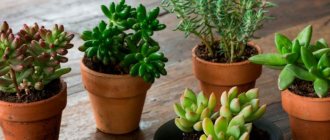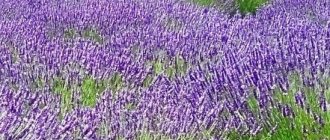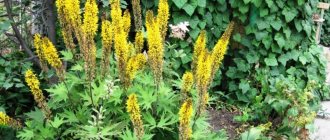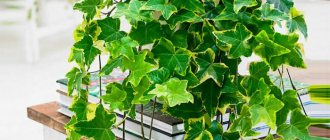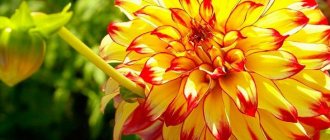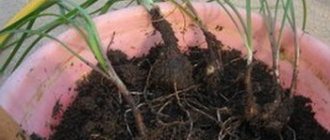According to one legend, during their expulsion from paradise, Adam and Eve were given two plants to make their earthly life easier. Rosemary was given as a gift to support the spirit, and mountain lavender was given as a gift to delight the soul.
Once you see the endless fields of this fragrant evergreen plant during the flowering period, you can easily believe in the legend, because aesthetic pleasure when admiring the flowers is guaranteed.
Colorful lilac and blue-violet inflorescences, swaying in the wind and impressing with the play of shades in the rays of the sun, present an unforgettable sight.
General tips and tricks for caring for lavender
- It is necessary to periodically loosen the soil near the bush.
- Timely removal of weeds.
- In dry summers, it is important to control soil drying out and increase the frequency of watering.
- For good development and abundant flowering, lavender should be planted in open sunny areas.
- Don't forget about feeding. Additional nutrients are very important for the growing season.
- In preparation for winter, pruning and covering the bush with spruce branches is necessary.
By following all the above recommendations, even an inexperienced gardener will be able to grow beautiful lavender flowers on his plot.
Application
For hundreds of years, people have used lavender in a variety of activities, from rituals to food.
We recommend reading:
- Flowers in August: photos and description
- Garden flowers that bloom in July: photos and names
Lilac - varieties, types, selection rules, planting nuances, cultivation secrets and care (105 photos and videos)
Cooking
Due to its aromatic properties, lavender is used in cooking.
- In lavender fields, bees collect healing honey.
- Added to dishes as a spice.
Official and traditional medicine
The chemical composition of the plant is diverse and can help against many diseases.
- Anesthesia.
- Has antibactericidal properties.
- Improved sleep and appetite.
- Healing cuts and wounds.
Perfumery
It is used in various cosmetics, as it contains a huge amount of essential oils, tannins, minerals and vitamins. The smell of lavender is skillfully used in the preparation of perfumes.
Features of growing lavender in different regions of Russia
Middle zone and Moscow region
An excellent option for this area is narrow-leaved lavender: English or medicinal. These are not whimsical varieties with sufficient frost resistance. Seeds can be sown in open ground starting in mid-May, the main thing is that frost has already passed. If you plant seedlings, the optimal time is considered to be early June. It is important to note that in this region you should not sow seeds in open soil for the winter - they will simply freeze. As for care, it does not require much effort from the gardener.
Southern regions
This zone has the most comfortable conditions for the growth of most types of lavender. Due to high temperatures and plenty of sunshine in summer, it is recommended to plant the plant in areas with little shade and good air circulation. Remember - excessive watering can destroy the bush; it is important to ensure good drainage in the soil.
Northern regions
Cold, rainy autumns and harsh winters are not the best conditions for growing perennial lavender species. Accordingly, it is worth planting indoor varieties in pots, which can be taken outside during the warm season. To grow in open ground, you will definitely need winter shelter and careful care during the growing season, even for winter-hardy hybrid varieties.
Popular types
In most cases, blooming lavender is associated with endless violet and lilac expanses. But in reality, these beautiful flowers impress with a wider range of colors. Some species can bloom with colorful blue, snow-white and pale pink spikelet inflorescences.
In total there are about 45 varieties of this fragrant evergreen subshrub. But in the garden at the dacha and on the windowsills in apartments, two main types are usually grown - English and French lavender and their hybrid varieties. The first variety is a garden variety, since it overwinters well in the soil, while the second is more capricious and is considered a heat-loving indoor plant.
Lavender grows well on mountain slopes, which is why it is often called mountain lavender. The hit song of the 80s also gave popularity to this name. based on Shabrov's poems. But in nature there is no separate such variety.
Lavender angustifolia or English
Because of its particular popularity, it is precisely this that is most often meant when talking about this plant. The shrub can grow with branches up to 1 m in width, reaching the same height of the stems.
The exception is the dwarf subspecies, whose lavender bush is usually no higher than 30 cm.
This species blooms in June-July with beautiful blue, lilac and light blue flowers. Many shoots are covered with a bluish edge, which adds attractiveness to the bushes. The species has a pleasant aroma, and it is from it that fragrant perfumes and skin care products based on lavender oil are created. Dried flowers, along with rose and jasmine petals, are added to herbal teas.
Elegance Pink is one of the varieties of this species, blooming with soft pink flowers. Its bushes can reach a height of up to 35 cm.
Broadleaf (medicinal) or French
This most fragrant (but not always particularly refined and pleasant) species was grown in the vastness of France back in the Middle Ages, which gave it its name. On one stem of the plant, up to three inflorescences with large flowers grow, which delight with bright colors in the spring. It is from this species that the main decorative varieties of lavender come, which are distinguished by a wide range of colors (from standard purple to light pink and even burgundy).
Bandera Pink blooms with beautiful purple inflorescences with pink tips. With its lilac hues, Bandera Purple Violet looks especially elegant in bouquets (both live and dried).
Hollandaise or lavandin
This variety is a hybrid of English and broadleaf lavender and is one of the heat-loving plants that are grown in the garden in the south or in a pot on the windowsill.
The height of the bushes can reach up to 2 m (the width is the same). This species is distinguished by curved inflorescences of purple and lilac shades that bloom in July.
Alba
This variety of hybrid lavender is distinguished by atypical white flowers and silvery-green leaves with a small edge. A beautiful spreading subshrub with abundant shoots, fragrant flowers and leaves is widely used in landscape design.
Also, this variety is often used in bouquets. Blooms in July-August. The dwarf variety is Nana Alba.
Most-beauty.ru already has an interesting article about the most beautiful bouquets; flower lovers will be delighted with this beauty!
Petiolate
This ornamental species blooms in colorful purple and is found throughout Portugal, Morocco and Spain. In Russia, these beautiful flowers with gray edges are grown exclusively indoors.
Serrated
This capricious beauty is very thermophilic and in mid-latitudes it is grown exclusively indoors in pots. In the wild it is found in Crimea. Large flowers of lilac and violet shades and jagged leaves with a silvery tint give the plant a special attractiveness. A popular variety among gardeners is Royal Crown.
Diseases and pests
Lavender is a fairly resistant plant to attacks from diseases and pests. As a rule, diseases appear due to improper or insufficient care of the plant. The most common disease of lavender is gray rot. This fungal disease appears as brown spots on the stem with a slight fluffy coating. If development is not stopped in time, the disease will spread to flowers and foliage, which will ultimately lead to the death of the plant.
To cure a flower, you need to cut and burn the affected areas of the plant. After this, you need to additionally treat the bush with a fungicide or a 1% solution of Bordeaux mixture. The cause of this disease is excessive watering and stagnation of water in the soil near the bush.
As for pests, pennies are considered the worst enemy of lavender. They eat holes in the foliage, which negatively affects the appearance of the plant. In the fight against the bug, you need to cut off already damaged leaf blades and collect insects by hand. This pest lays its eggs on the stem with a protective foam layer. They can be removed quite easily and washed off with water. Rainbow beetles can also attack the foliage, which will also have to be collected manually.
Slobbering Penny
Rainbow beetle
To ensure that lavender does not get sick and delights you with its beauty for a long time, it is important to follow the rules of caring for the plant.
At the wedding
Lavender is considered a symbol of love, purity and nobility, beauty and sophistication. According to many beliefs, this plant helps lovers to love each other passionately and tenderly, and brings happiness. Therefore, it is not surprising that its dried fragrant petals have long been showered on newlyweds at weddings. Taking into account the special symbolism and versatility of the color scheme, this plant is relevant both in modern wedding decor and in the bride’s bouquet.
Lavender is most appropriate when decorating a wedding in a French style, with a Provence or rustic atmosphere. A small bouquet will look decent in the groom’s boutonniere, and a small bouquet of lavender alone, decorated with lace, will also be suitable for the bride. Dry compositions can also be used. In this case, you can even decorate invitations and cards for placing guests with lavender sprigs.
Beneficial properties of lavender
Lavender is not only a beautiful, but also a useful plant. It contains essential oils that contain tannins: coumarin, linalol, amyl alcohol, herniarin, zedren, citral, bisabolene, as well as butyric, valeric and capric acids. Essential lavender oil is contained in the entire aerial part, but its greater concentration is in the flowers. It has medicinal properties: diuretic, anti-cold, bactericidal, antiseptic and sedative.
Since ancient times, lavender has been widely used in folk medicine. Due to its unique medicinal qualities, it has a wide range of applications. Essential oil, as prescribed by a doctor, can be used to treat the digestive tract, genitourinary system, nervous disorders and cardiovascular diseases. Over centuries of practice, the healing properties of lavender are undeniable.
Essential oil is also widely used in cosmetology. It improves hair condition even upon first use. It is used in facial care procedures and helps fight age-related skin changes, relieve allergic reactions and rashes. Before using lavender oil in care or treatment, you should definitely consult with your doctor.
The best lavender fields in France
Famed for its stunning landscapes of purple lavender fields, Provence in France is filled with places worth visiting. When the lavender fields bloom from mid-June to the end of July, Provence becomes one of the busiest regions in France.
The unique violet, violet and blue lavender fields attract more than 24 million visitors from all over the world every year.
It's no wonder that summer is filled with lavender in Provence and throughout France. Until mid-August, the charming villages of Provence organize lavender festivals with traditional dances and songs, demonstrations and craft markets.
Lavender fields are the best places in France to admire flowering plants and take beautiful photos:
Abbey of Senanque. For photos with stunning views, visitors head to the famous monastery of the Abbey of Notre-Dame de Sénac. The 12th-century abbey, surrounded by purple lavender fields, is great for scenic views and attracts crowds of visitors every summer.
The Abbey of Notre-Dame de Senac is home to a community of Cistercian brothers.
Lavender fields: photo of the Abbey of Notre-Dame de Senac
This place is located near the impressive mountain village of Gordes in Vaucluse-en-Provence. The abbey was founded in 1148 by Cistercian monks. The monastery shop sells various items made by the monks, such as lavender essential oil, honey, olive oil, soap.
The Abbey is open to tourists, but it should be remembered that this is first and foremost a fully functioning monastery, so it is recommended to be respectful here: do not take photographs during church services and try to maintain respectful silence.
Lavender fields of Plateau de Valensole. The Valensole plateau, famous for its lavender, is the ideal place to stroll among the flowers and enjoy the sweet scent that fills the air. Huge purple fields stretch as far as you can see.
More than 800 sq. km. dedicated to the cultivation of lavender, making the Valensole plateau the largest area in France for the cultivation of this crop. In addition to the magnificent views, visitors to the Valensole plateau can also explore lovely villages with churches, castles, ramparts, museums and distilleries.
Village of Sault. Perched on a hilltop more than 700m above sea level, the small village of Sault is the ideal place to admire panoramic views of fields of blue lavender. The path, trampled by thousands of tourists, leads from the village straight to the fields.
Interesting facts about lavender
- The usual color of lavender is purple, but there are varieties with pink and white flowers.
- Industrial cultivation began in the 17th century in France. Lavender was grown to make perfume.
- Perennial varieties age over time. After only 5-6 years of growth, they become naked and have an unattractive appearance. They need to be changed in a timely manner.
- Lavender is a valuable honey plant that allows beekeepers to obtain truly unique and valuable honey.
- Lavender is used to create exquisite tea blends. In Hungary, they even make ice cream from lavender.
- The largest amount of lavender is grown on an industrial scale in Bulgaria - 120 tons of essential oil, while in France only 30 tons are produced per year.
- Lavender got its name “Lava” - which means “to wash” - after the Romans in ancient times added the plant’s flowers to the bath.
Beautiful bouquets
Delicate and romantic lavender is a universal flower that will be appropriate in a wedding bouquet for any design. It can be combined with garden roses, clematis and spikelets. It is also permissible to add freesias, peonies, orchids and carnations. The main thing is not to make unnecessarily bulky compositions.
Mono-bouquets of purple tones will look advantageous, emphasizing spiritual beauty. A bouquet of lavender combined with peonies will be more feminine. Such compositions look lush and luxurious, while maintaining a feeling of tenderness. The most exotic and sophisticated bouquets will be lavender in combination with white roses and orchids, which are simply ideal in terms of the harmonious combination of colors.
For a vintage style wedding, you can decorate a lavender bouquet with a composition of pearls. In any case, these flowers are the best choice for romantic natures.
